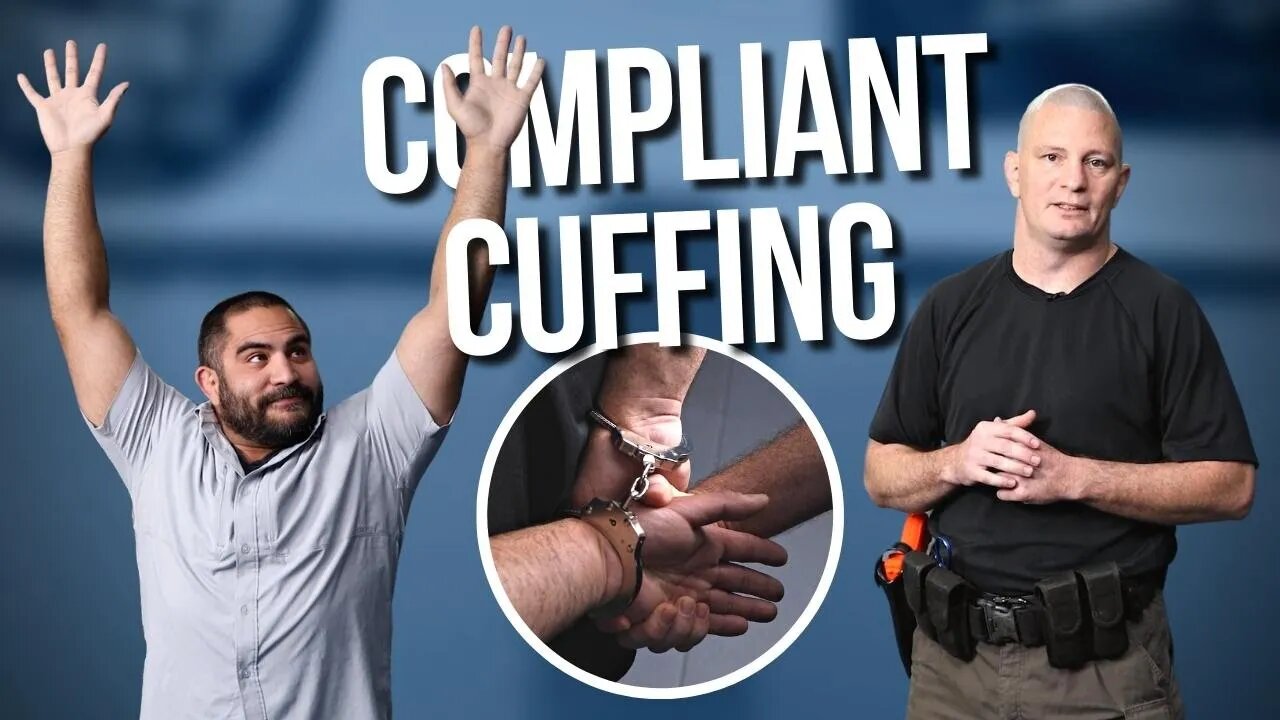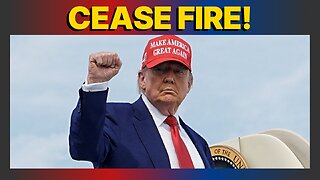Premium Only Content

Compliant Handcuffing w/ Jimmy Terrell from @nationalforcetrainingacade8598
Law enforcement officer Jimmy Terrell from @nationalforcetrainingacade8598 demonstrates various techniques for handcuffing a compliant suspect in this video. He emphasizes the need to control the suspect's elbows, use the handcuffs as a handle to maintain distance, and avoid causing unnecessary pain. Terrell suggests using a kneeling technique or quicker handcuffing method, depending on the situation. He also stresses the importance of getting control of the suspect before using handcuffs, rolling the suspect to their side, avoiding sensitive areas, and preventing excessive use of force. Overall, Terrell's techniques prioritize the safety of both the officer and the suspect.
00:00:00 In this section, Jimmy Terrell, a national Jiu Jitsu champion, demonstrates how to handcuff a compliant suspect. He emphasizes the importance of controlling the suspect's elbows, which gives the officer control of their entire body and reaction time to decide if a takedown or push away is necessary. Terrell also advises officers on the proper way to escort a handcuffed suspect, avoiding torquing and finger-trapping situations. Finally, he discusses the importance of giving specific instructions to the suspect before taking the handcuffs off, ensuring that any movement outside of those instructions is perceived as a threat.
00:05:00 In this section, Jimmy Terrell, a law enforcement officer, discusses the proper technique for handcuffing a compliant suspect. He emphasizes the importance of immediately closing the handcuff after it opens and avoiding leaving it open, as it can cause considerable harm to the officer's face or eyes. Terrell suggests using the handcuff as a handle to maintain distance from the suspect and have more control in case the suspect starts fighting. He also recommends controlling the elbows to have control over the suspect's whole body and maintaining his balance while searching him. Terrell emphasizes that it's important to avoid causing unnecessary pain or discomfort to a compliant suspect during the handcuffing process.
00:10:00 In this section, Jimmy Terrell explains the dangers of common handcuffing methods using positions like the hands on the back of the head or the hands on the wall, as these do not provide enough control over the suspect. He explains the kneeling handcuffing technique to ensure more control and prevent suspects from reaching for a weapon. Additionally, Terrell shares a quick and easy handcuffing method where he points his thumb at his chest and places the handcuff behind the suspect's back, allowing him to cuff faster and with more control.
00:15:00 In this section, Jimmy Terrell demonstrates the proper techniques for handcuffing a compliant suspect. He stresses the importance of keeping the suspect's hands as far away from the body as possible to give the officer the most reaction time. He explains the flaws in traditional techniques of having the suspect turn around or lift their shirt, and instead prefers to have the suspect on their stomach, with their hands and feet spread wide. Terrell also explains the most effective way to pin the suspect's shoulder to the ground before grabbing their wrist and putting it behind their back. This method avoids potential injury or death caused by placing weight on the shoulders or neck. He provides multiple options for officers to control and detain a suspect, depending on the level of resistance.
00:20:00 In this section, a police officer named Jimmy Terrell explains one of the key aspects of handcuffing a compliant suspect. He stresses the importance of getting control of the suspect before taking out the handcuffs, and then proceeds to demonstrate a technique of asking the suspect to switch hands and grabbing onto their fingers for control. He also emphasizes the need to roll the suspect to their side, keep pressure on their elbows, and avoid putting weight on sensitive areas like the neck and head. This approach is designed to reduce the risk of excessive use of force and prevent incidents like the George Floyd and Tony Tempa cases.
-
 17:52
17:52
Tactical Considerations
18 hours ago $0.05 earnedGlock 43X Radian Ramjet Afterburner & Magwell Ultimate EDC!
1801 -
 LIVE
LIVE
Ashaelon
10 hours ago $0.15 earnedI'm a FISCIT employee! ::: No addiction here! ::: Satisfactory
61 watching -
 LIVE
LIVE
FyrBorne
11 hours ago🔴Warzone M&K Sniping: Be Like The Phoenix
20 watching -
 30:54
30:54
Anthony Pompliano
16 hours agoHow Geopolitics Are Making Bitcoin Stronger
192 -
 LIVE
LIVE
FLRG
2 hours agoFLRG IN THE MORNING
23 watching -
 51:54
51:54
SinCityCrypto
17 hours ago $0.02 earnedBitcoin Pumps as Global Tensions Ease (Ai Crypto Rally)
483 -
 22:00
22:00
DeVory Darkins
1 day ago $3.61 earnedBREAKING: Trump announces CEASE FIRE as Democrats dealt LEGAL BLOW by SCOTUS Ruling
10.6K46 -
 1:36:18
1:36:18
Gary Cardone
2 days agoI AM
11.9K2 -
 LIVE
LIVE
Lofi Girl
2 years agoSynthwave Radio 🌌 - beats to chill/game to
1,104 watching -
 16:29
16:29
GritsGG
14 hours agoThis is How We Win 90% of Our Warzone Games
51K2